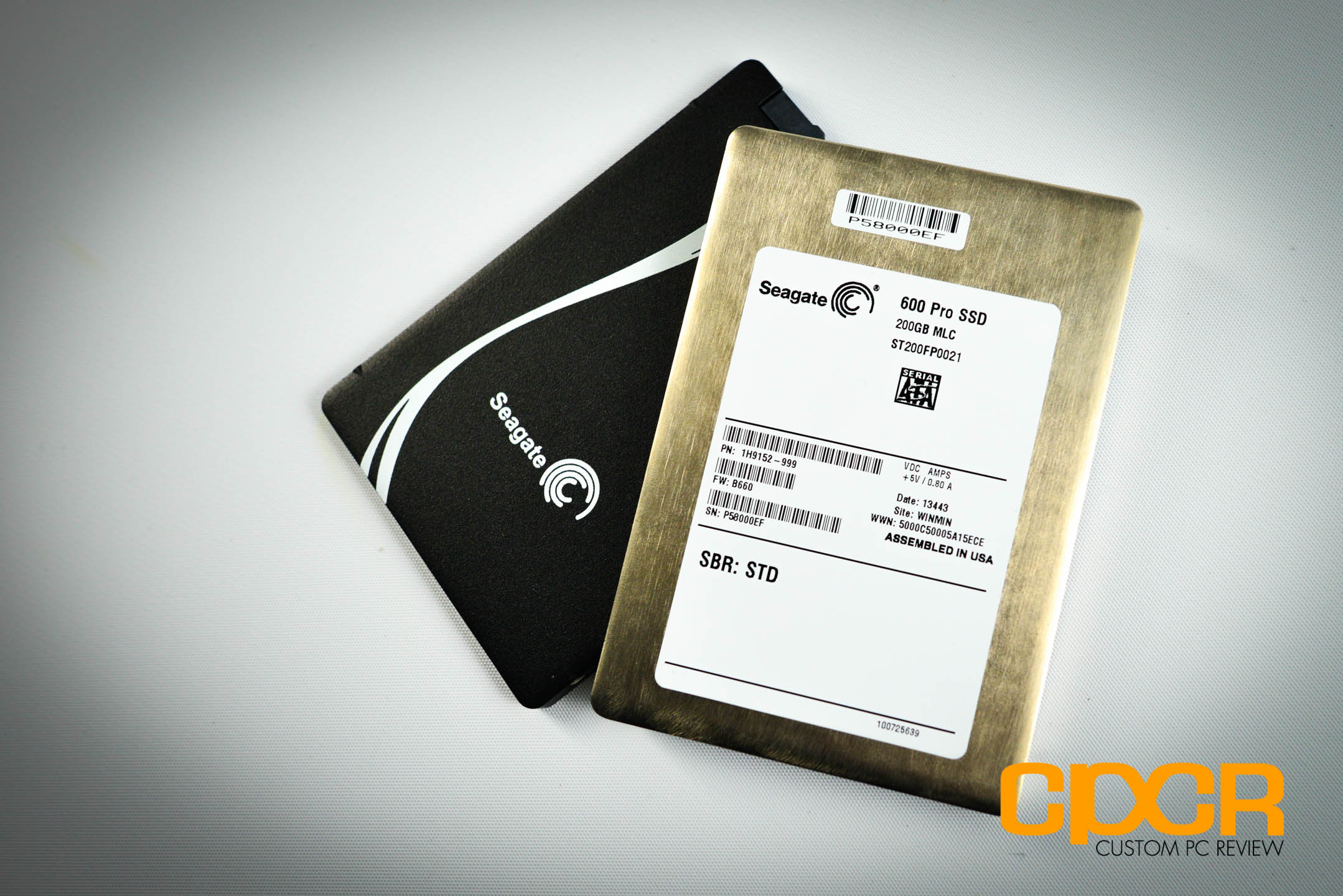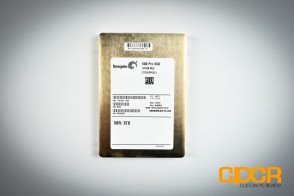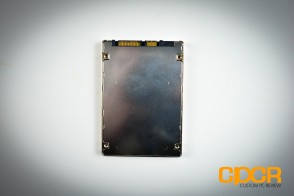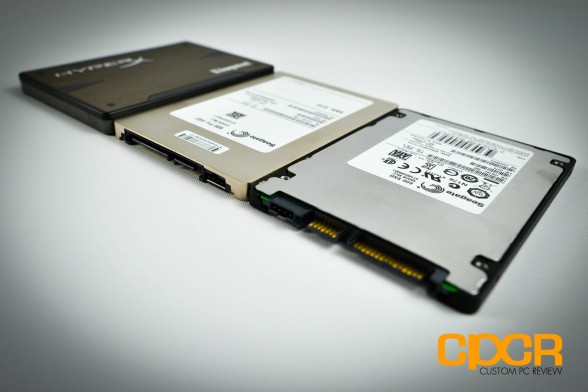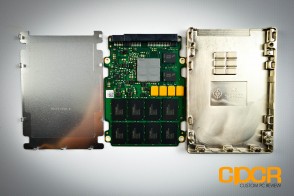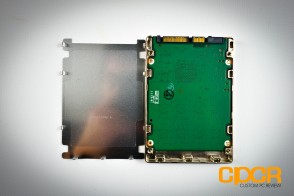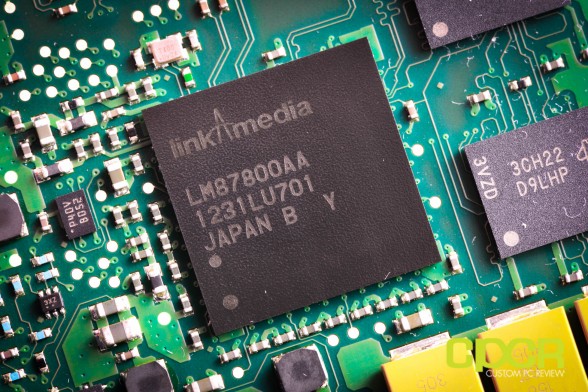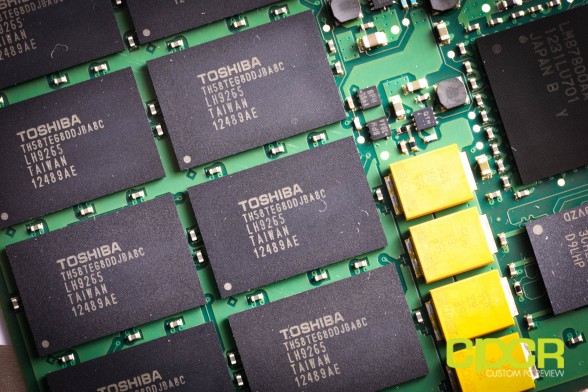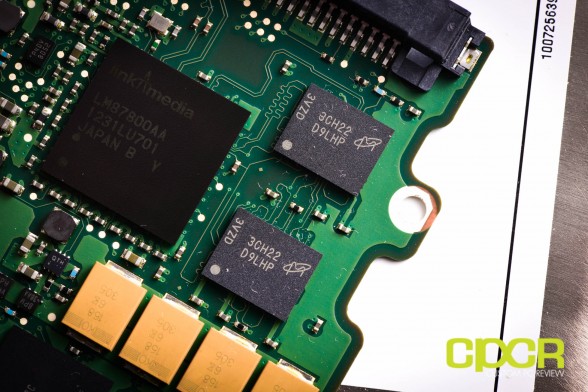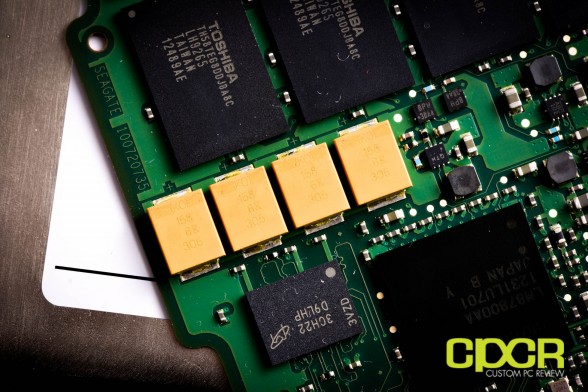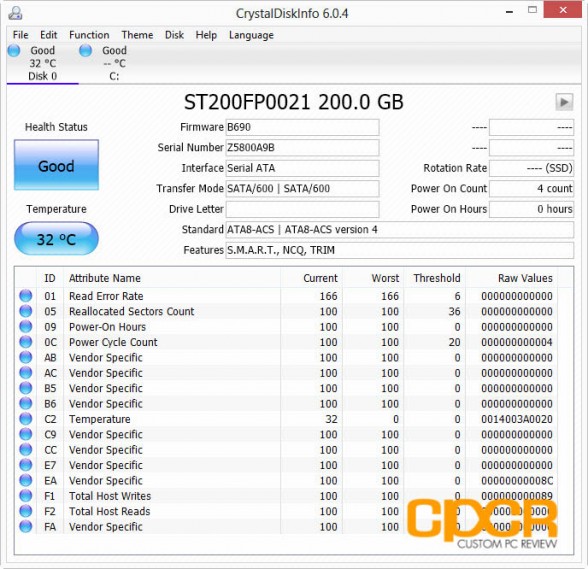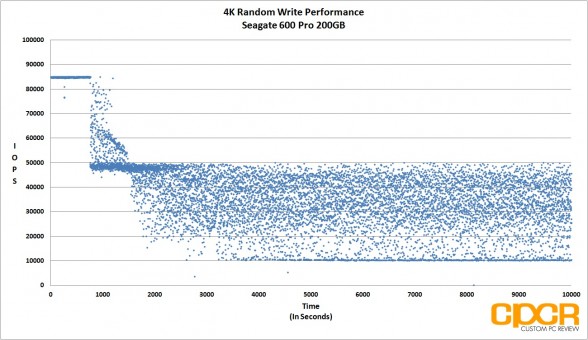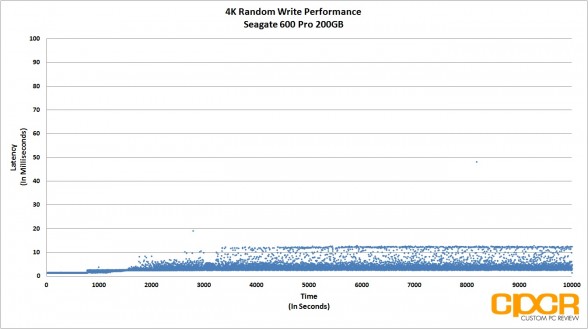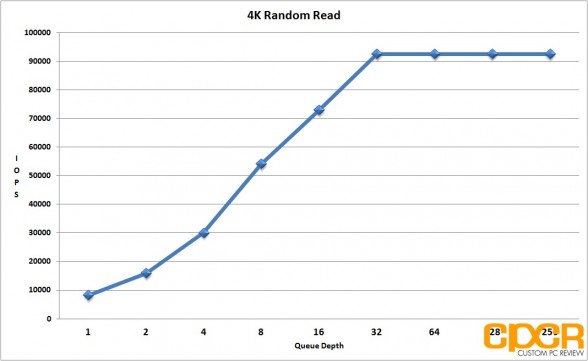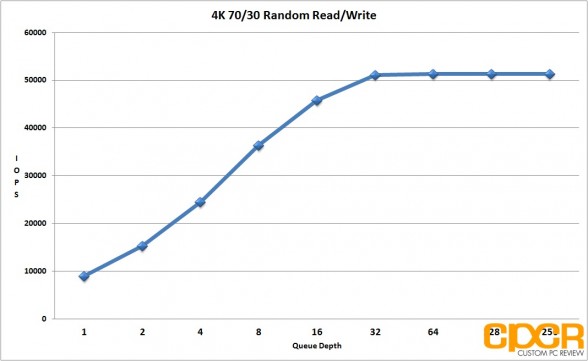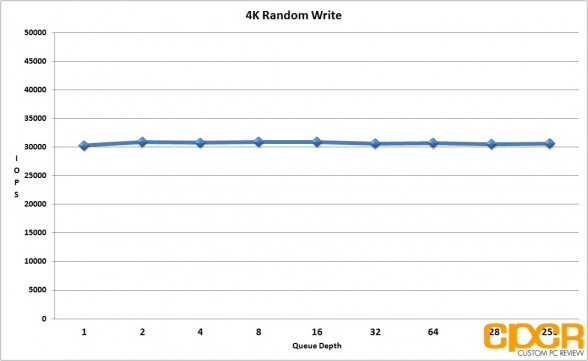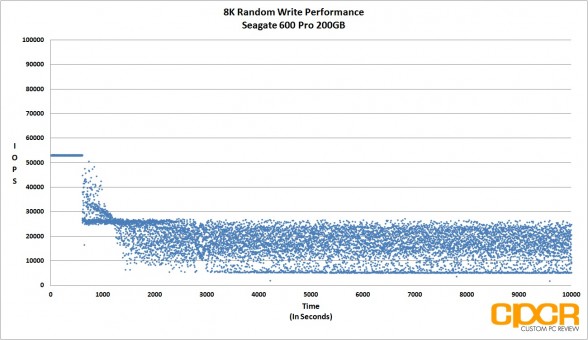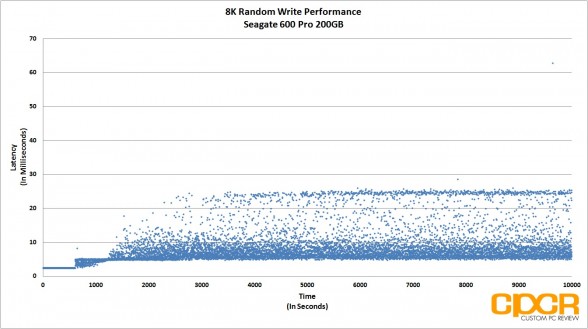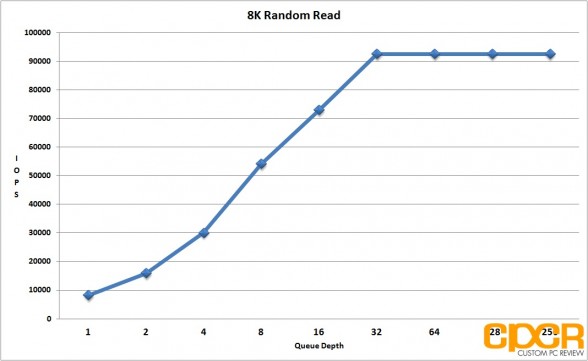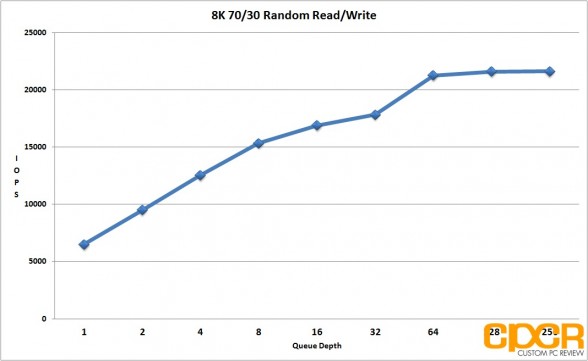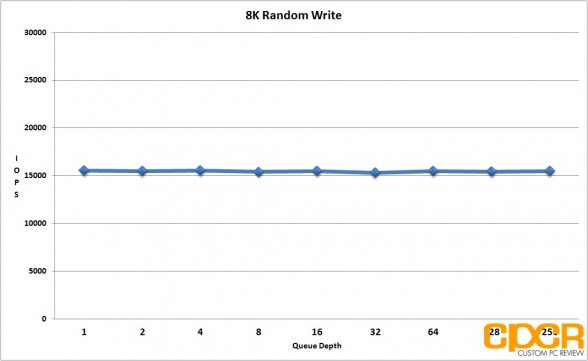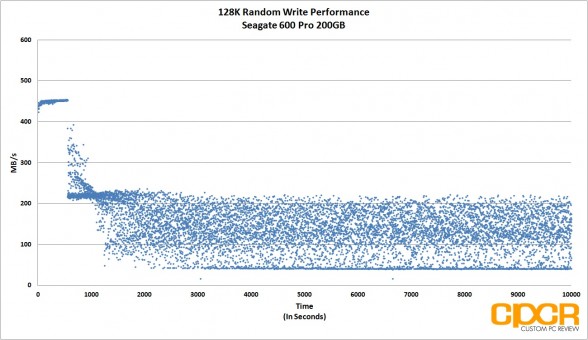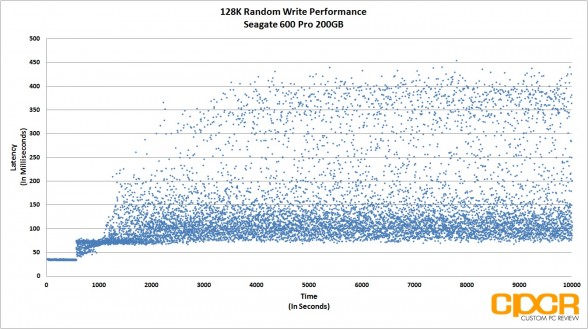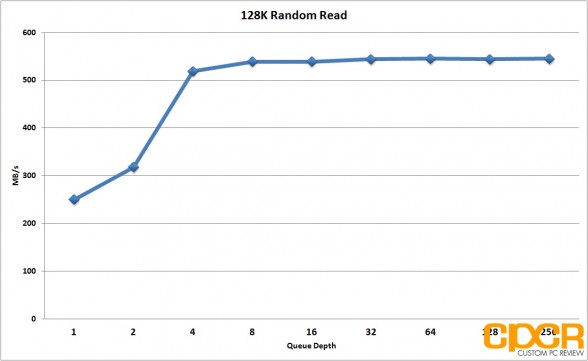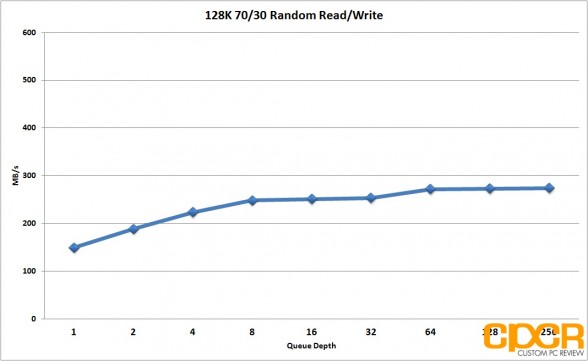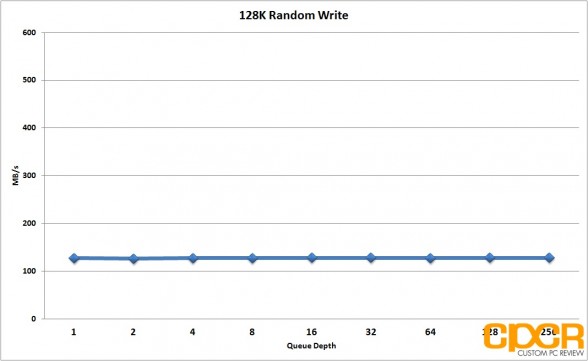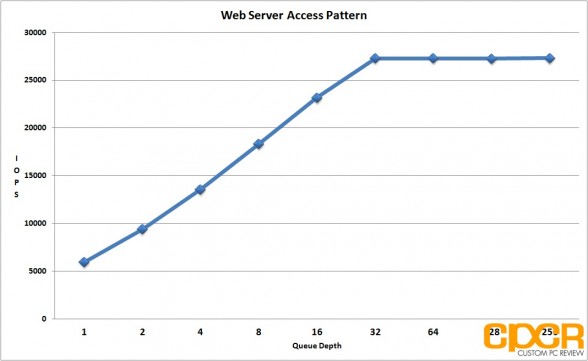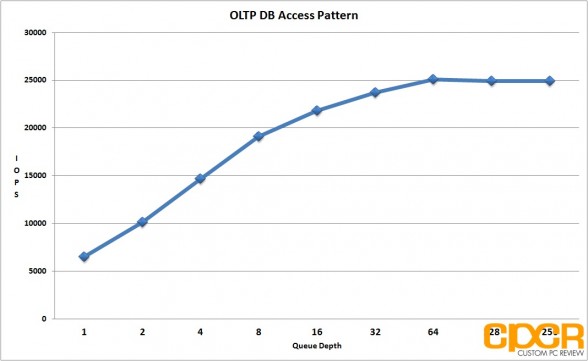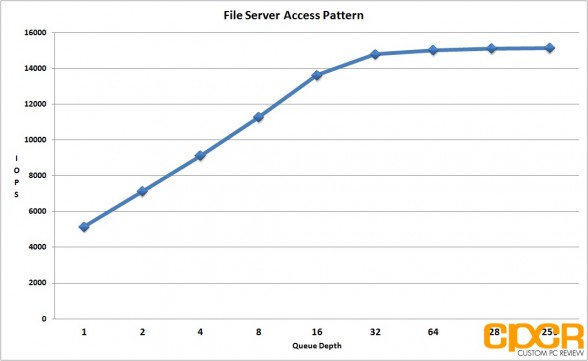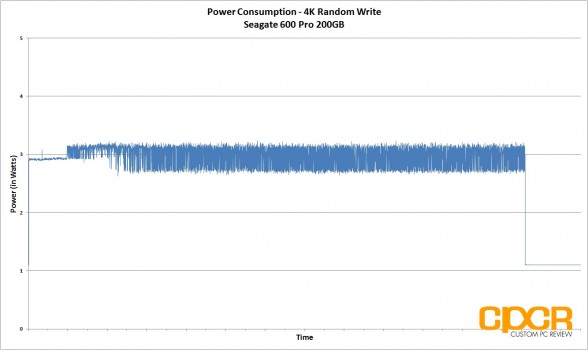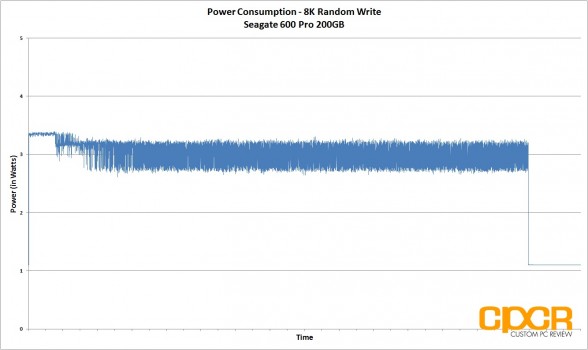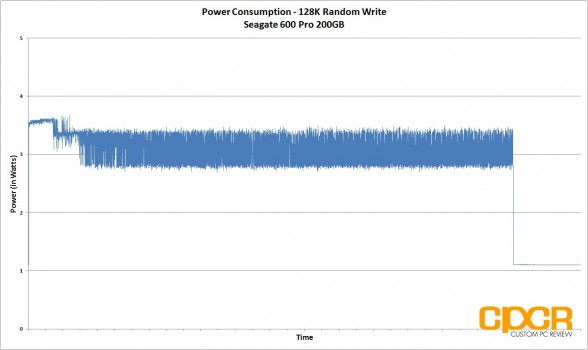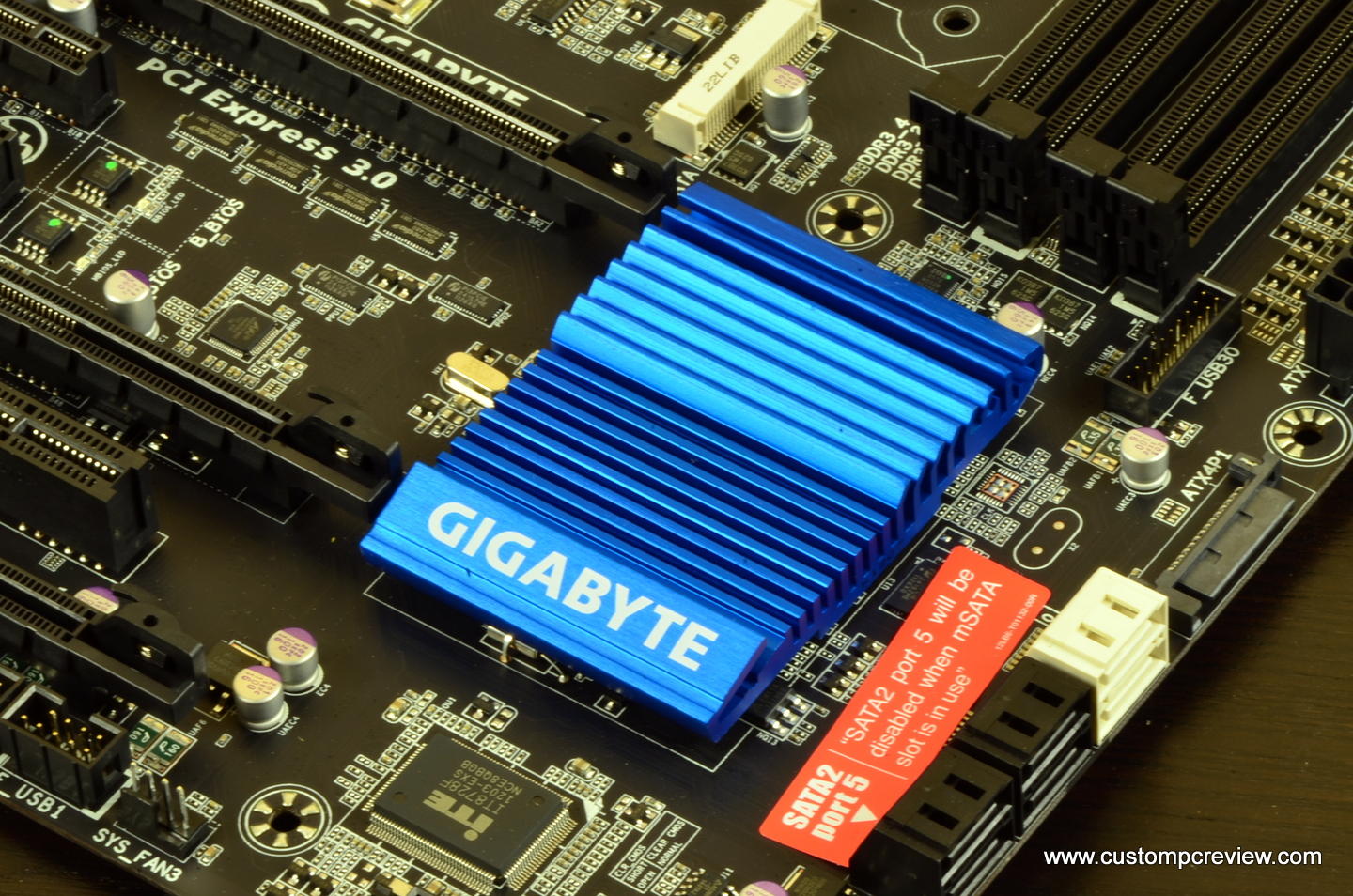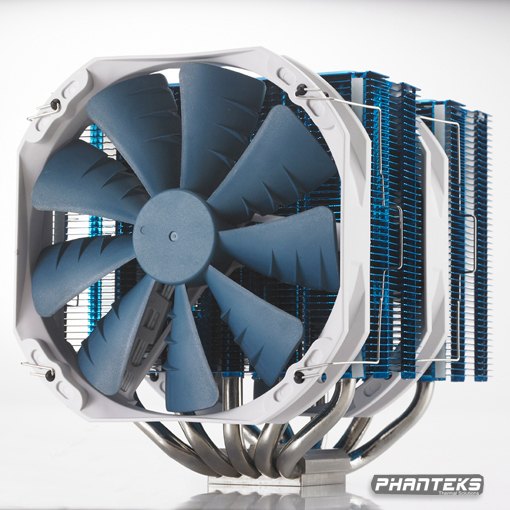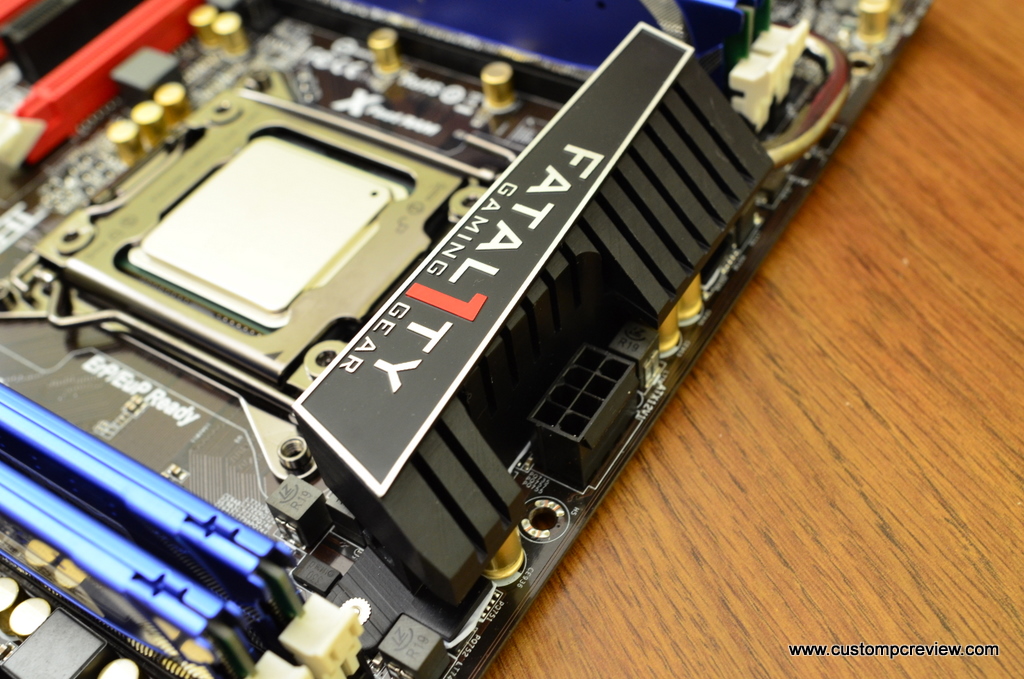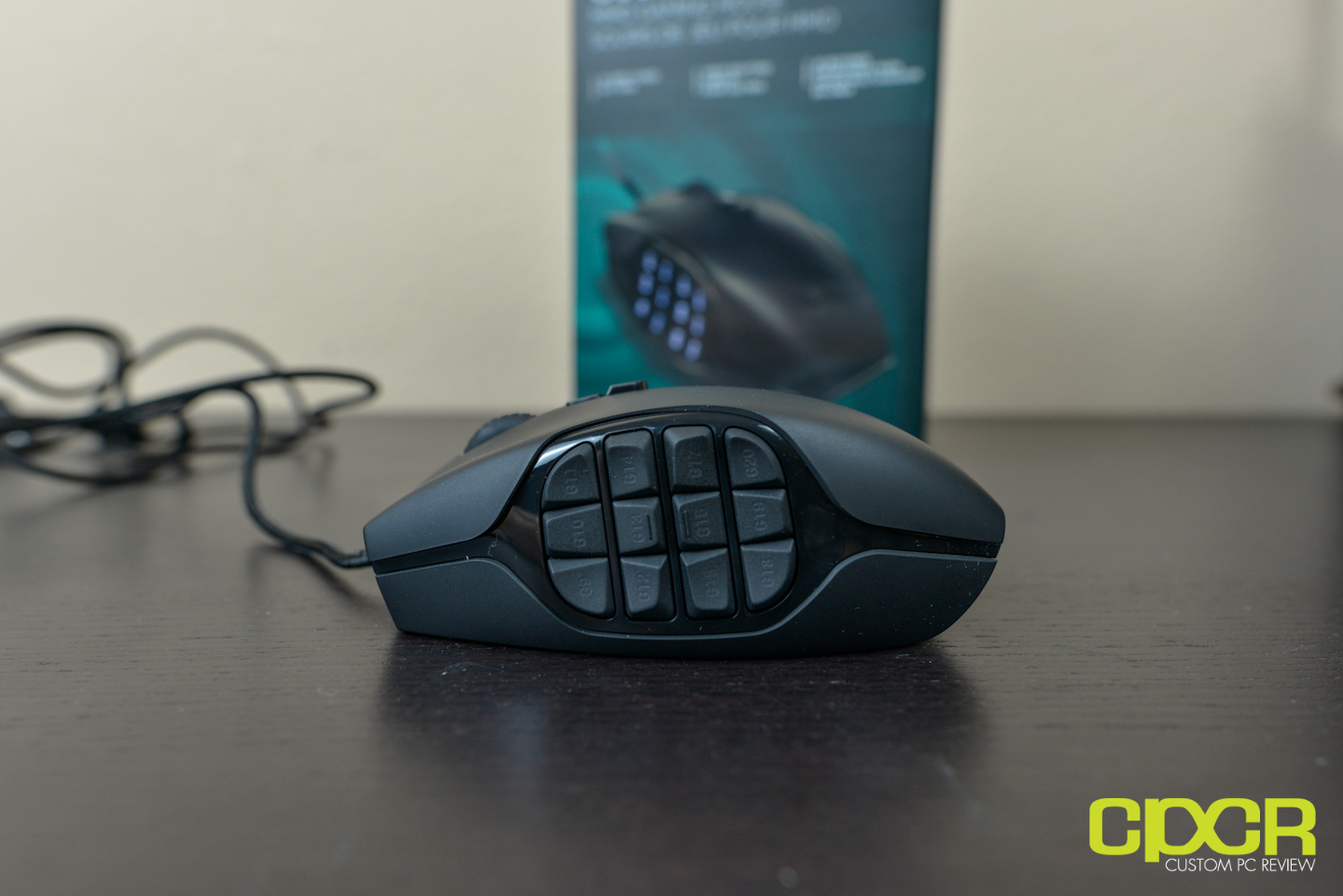[section label=1. Introduction]
Seagate 600’s Enterprise Cousin
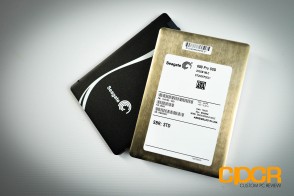 A couple weeks ago we reviewed the Seagate 600 480GB, which is Seagate’s latest and greatest consumer oriented SSD. In our review, we found the drive to be a great performing drive carrying a low pricetag and the backing of one of the storage industry’s largest players.
A couple weeks ago we reviewed the Seagate 600 480GB, which is Seagate’s latest and greatest consumer oriented SSD. In our review, we found the drive to be a great performing drive carrying a low pricetag and the backing of one of the storage industry’s largest players.
While the Seagate 600 is a fantastic consumer oriented drive, it also has an enterprise oriented twin – the Seagate 600 Pro, which we’ll be checking out today. Now the Seagate 600 Pro is a fairly new category of SSD that’s become quite popular with enterprise users in recent years. Whereas faster, costlier, and more durable SLC NAND has traditionally been used in enterprise environments, many enterprise users have since switched over to MLC NAND based SSDs that are essentially consumer drives with enterprise oriented features and higher binned NAND. This gives enterprise users who don’t necessarily require a lot of writes a lower TCO, but still provides more write endurance than a typical consumer SSD can provide.
Seagate 600 vs Seagate 600 Pro
While the Seagate 600 and the Seagate 600 Pro share many similarities, the Seagate 600 Pro carries a couple enterprise oriented features that separate it from the Seagate 600. The first is power loss protection. The Seagate 600 Pro contains an array of capacitors which flush data out of the DRAM cache in the event of power loss. This is a very enterprise oriented feature that we’ve seen in a number of enterprise and pseudo-enterprise (yeah, looking at you Crucial M500) oriented drives. The second enterprise oriented feature on the Seagate 600 Pro is a longer 5 year warranty with a higher TBW (Terabytes Written) rating. Whereas the Seagate 600 Pro ranges from 105 to 1,190 TBW depending on capacity and over-povisioning, the vanilla Seagate 600 only gets a meager 36.5 to 72 TBW depending on capacity. This is most likely due to Seagate’s use of better binned NAND on the 600 Pro.
Seagate 600 Pro Specifications
| Manufacturer | Seagate | Seagate | Seagate | Seagate |
|---|---|---|---|---|
| Model | 600 Pro | 600 Pro | 600 Pro | 600 Pro |
| Form Factor | 7mm, 2.5″ SATA | 7mm, 2.5″ SATA | 7mm, 2.5″ SATA | 7mm, 2.5″ SATA |
| Capacity | 100GB | 120 GB | 200/400 GB | 240/480 GB |
| Controller | Link A Media LM87800 | Link A Media LM87800 | Link A Media LM87800 | Link A Media LM87800 |
| NAND | 19nm Toshiba MLC Toggle NAND | 19nm Toshiba MLC Toggle NAND | 19nm Toshiba MLC Toggle NAND | 19nm Toshiba MLC Toggle NAND |
| Sequential Reads | 520MB/s | 520MB/s | 520MB/s | 520MB/s |
| Sequential Writes | 300MB/s | 300MB/s | 450MB/s | 450MB/s |
| 4K Random Read | 80,000 IOPS | 80,000 IOPS | 85,000 IOPS | 85,000 IOPS |
| 4K Random Write | 20,000 IOPS | 8,000 IOPS | 30,000 IOPS | 11,000 IOPS |
| Interface | SATA 6GB/s | SATA 6GB/s | SATA 6GB/s | SATA 6GB/s |
| Warranty | 5 Years | 5 Years | 5 Years | 5 Years |
The Seagate 600 Pro will come in six models ranging in capacities between 100GB up to 480GB. This is because Seagate has three models of the 600 Pro with 7% over-provisioning and another three models with 28% over-provisioning. This allows the consumer to choose between capacity or long term performance/endurance.
For our review today, we received the Seagate 600 Pro 200GB, which is over-provisioned at 28%. This should offer us a good mix of price, performance, and endurance. While we didn’t get a chance to sample the models over-provisioned at 7%, on paper the performance specs seem quite close to what’s offered by the consumer oriented Seagate 600.
With that said, let’s take a closer look at the Seagate 600 Pro 200GB!
[section label=2. A Closer Look]
A Closer Look at the Seagate 600 Pro 200GB
Here’s a look at the Seagate 600 Pro 200GB SSD. The Seagate 600 Pro is an enterprise SSD so unlike the consumer oriented Seagate 600, it doesn’t have much in the looks department. The entire unit is simply enclosed in a metal casing which dissipates heat away from the internal components. Affixed to the front of the unit is a sticker with information about drive model, drive capacity, serial number, part number, etc.
The Seagate 600 Pro is a SATA 6Gb/s SSD in the 2.5″, 7mm thin form factor. This makes it very flexible as it can be deployed in thin and light notebooks, desktops, rack mount servers, and some blade servers that only support 7mm drives.
Popping open the casing here we can see that Seagate is only populating one side of the PCB on the 200GB model.
As expected, the Seagate 600 Pro uses the LAMD (Link A Media Devices) LM87800 controller, which is the same controller used on the vanilla Seagate 600. It’s a very enterprise oriented, 8 channel controller we’ve seen in the past on Corsair Neutron/Neutron GTX SSDs as well.
On the Seagate 600 Pro 200GB, we also get eight modules of 32GB Toshiba Type C Toggle Mode 2.0 MLC NAND (Model #TH58TEG8D0JBA8C) making up 256GB.
Onboard we get two Micron DDR2-800 128MB DRAM buffer chips totaling 256MB (FBGA Code: D9LHP).
As an enterprise oriented SSD, the Seagate 600 Pro also contains four 1500uF capacitors, which help flush data in the volatile DRAM buffer in case of sudden power loss.
[section label=3. Test Setup/Drive Information]
Haswell Test Bench
| System | CyberPowerPC Gamer Xtreme 4200 |
|---|---|
| CPU | Intel Core i7 4770K |
| Motherboard | ASUS Z87-A |
| Memory | Kingston HyperX Genesis 16GB DDR3 2133MHz |
| Graphics | Intel HD4600 Graphics |
| Storage | OCZ Vertex 4 256GB |
| Power Supply | Corsair HX650 |
| Case | HSPC High Speed Tech Station |
| Optical Drive | ASUS OEM DVD Drive |
| Operating System | Windows 8 64 bit & CentOS 6.4 |
Special thanks to CyberPowerPC, Kingston, OCZ Technology and HSPC for sponsoring our test bench!
Crystal Disk Info
Seagate 600 Pro 200GB
Today we’ll be reviewing the Seagate 600 Pro 200GB with the B690 firmware out of the box. Looking at our initial Crystal Disk Mark report, we can see that the features here are fairly similar to the vanilla Seagate 600. We’ve got S.M.A.R.T. reporting, NCQ (Native Command Queuing), and TRIM. There doesn’t seem to be any advanced power management or TCG Opal 2.0/IEEE-1667 hardware encryption to speak of.
For full disclosure’s, we also initially received a Seagate 600 Pro 200GB manufactured on 05-05-2013 with the B660 firmware, which is the SSD we’ve used for pictures in this review. Unfortunately our sample with the B660 firmware started having some issues a couple days into testing such as failed SMART diagnostics and failure to POST. That said, after a bit of tinkering I was able to get the B660 firmware 600 Pro working again with zero POSTing issues and an A-OK from S.M.A.R.T. after somehow managing to initiate a secure wipe on the drive. So far I’ve been able to run a lot more stress testing on the drive without any additional issues and since I wasn’t able to reproduce the problem, I won’t throw Seagate under the bus. However, I’m definitely keeping a close watch on this one and will update if any issues arise.
After the issues with the original B660 firmware 600 Pro 200GB, Seagate sent out a second 600 Pro 200GB manufactured on 08-09-2013, which had the B690 firmware out of the box. I’m assuming B690 is the firmware being shipped with all new drives. I did not experience any issues with the B690 firmware 600 Pro, which is what all of our testing today will be based.
[section label=4. 4K Random Read/Write Performance]
Seagate 600 Pro 200GB Performance
4K Random Write Preconditioning
Before our 4K Random Read/Write performance testing, we’ll first precondition our enterprise SSD by secure erasing the drive then hammering it with a little over 10,000 seconds worth of 4K random writes. By recording the IOPS and latency every second during our run, it’s easy to see what kind of write performance can be expected as our enterprise SSD goes from fresh out of the box into steady state.
4K Random Read/Write Performance
After our 4K random write preconditioning, we then run two more passes of 4K random data through the enterprise SSD for consistency before conducting our actual testing below.
Performance Analysis
From our first look here at our 4k read/write performance results, it’s quite apparent that Seagate has optimized the 600 Pro for read intensive applications. At QD 32 and higher, the Seagate 600 Pro is capable of just slightly over 92,000 IOPS even in steady state. On the other hand, the 600 Pro is capable of up to a good 30,000 IOPS or so in 4K writes however, it’s important to note that write performance lacks consistency in steady state ranging from 10,000 IOPS up to 50,000 IOPS. Latency on the other hand isn’t too bad with nearly all requests completed in 15ms or less.
[section label=5. 8K Random Read/Write Performance]
Seagate 600 Pro 200GB Performance
8K Random Write Preconditioning
Before our 8K Random Read/Write performance testing, we’ll first precondition our enterprise SSD by secure erasing the drive then hammering it with a little over 10,000 seconds worth of 8K random writes. By recording the IOPS and latency every second during our run, it’s easy to see what kind of write performance can be expected as our enterprise SSD goes from fresh out of the box into steady state.
8K Random Read/Write Performance
After our 8K random write preconditioning, we then run two more passes of 4K random data through the enterprise SSD for consistency before conducting our actual testing below.
Performance Analysis
8K random read/write performance is fairly similar to what we see from our 4K performance numbers. Once again, we’re looking at very, very solid random read performance topping out at just over 92,000 IOPS and decent random write performance topping out at around 15,000 IOPS. Again, like in our 4K performance testing, there’s a fairly large variance in 8K steady state random write performance with performance dipping as low as 5,000 IOPS at times and maxing out at around 25,000 IOPS. While there’s a good 20ms variance in latency, Seagate does manage to keep everything well under 50ms.
[section label=6. 128K Random Read/Write Performance]
Seagate 600 Pro 200GB Performance
128K Random Write Preconditioning
Before our 128K Random Read/Write performance testing, we’ll first precondition our enterprise SSD by secure erasing the drive then hammering it with a little over 10,000 seconds worth of 128K random writes. By recording the IOPS and latency every second during our run, it’s easy to see what kind of write performance can be expected as our enterprise SSD goes from fresh out of the box into steady state.
128K Random Read/Write Performance
After our 8K random write preconditioning, we then run a two more passes of 4K random data through the enterprise SSD for consistency before conducting our actual testing below.
Performance Analysis
Looking at large block transfers, again read performance is fantastic here with steady state random read performance topping out at Seagate’s rated 520 MB/s. Random writes on the other hand don’t do so well averaging out at just slightly above 100MB/s. Unfortunately, like what we see with the 4K and 8K steady state random write performance testing, there’s again a fairly large variance between maximum write performance ranging from around 40 MB/s to about 220 MB/s.
[section label=7. Server Access Patterns]
Seagate 600 Pro 200GB Performance
Server Access Patterns
While synthetic workloads are great indicators of a SSD’s performance, it’s not always indicative of how a SSD is actually going to be used in the real world. Very few applications for example will run continuous passes of 4K data at QD256. This is why we also run testing using typical access patterns users would face in the real world.
Testing here is conducted after a secure erase is performed followed by two full passes of 128K data followed by two full passes of 4K random data.
Web Server Access Pattern
Our web server access pattern simulates the type of activity found in a typical web server. The access pattern is made up of 100% reads with blocksizes ranging from 512b up to a maximum of 512K.
Access Pattern: 100% Read / 512b=22%, 1K=15%, 2K=8%, 4K=23%, 8K=15%, 16K=2%, 32K=6%, 64K=7%, 128K=1%, 512K=1%
OLTP/Database Access Pattern
Our OLTP/Database access pattern simulates typical online transactional processing and database workloads. The access pattern here is made up to 67% reads and 33% writes at the 8K blocksize.
Access Pattern: 67% reads, 33% writes / 8K=100%
File Server Access Pattern
Our file server access pattern simulates a typical fileserver. The access pattern here is made up of 80% reads and 20% writes with blocksizes ranging between 512b to 64K.
Access Pattern: 80% reads, 20% writes / 512b=10%, 1K=5%, 2K=5%, 4K=60%, 8K=2%, 16K=4%, 32K=4%, 64K=10%
Performance Analysis
Since we don’t have competing enterprise SSDs in house for comparison at the moment, it’s difficult to say where the Seagate 600 Pro stands in terms of performance compared to other enterprise SATA based SSDs on the market. That said, considering the workloads are a multitude of different block sizes and a mix of reads and writes, the Seagate 600 Pro definitely seems to scale very well and performance here is decent with webserver and database profiles hitting around 25,000 IOPS at higher queue depths.
[section label=8. Power Consumption]
Seagate 600 Pro 200GB Power Consumption
For our power consumption testing today, we’ll be conducting a trace on power draw during our 4K, 8K and 128K preconditioning runs. All power testing below is measured by tapping our calibrated B&K Precision 5491B Bench Multimeter directly into the 5v line running from the power supply to the drive.
Performance Analysis
Seagate rates the Seagate 600 Pro 200GB at 1.05w at idle and 2.8w at load, which is about what we measured as well. Power consumption when working with 128K data was slightly higher, but only about 0.2w or so, so it’s not a huge difference.
Without any competing enterprise SSDs on our charts it’s difficult to say if the Seagate 600 Pro is more efficient in comparison to competing enterprise SSDs however, an average 2.8w power draw at load should be a whole lot more efficient than typical enterprise hard drives.
[section label=9. Conclusion]
Seagate 600 Pro 200GB Conclusions
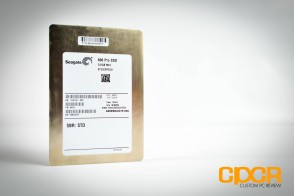 While SLC NAND based SSDs are still a dominant force in enterprise SSD deployments, I think it’s become quite clear over the past few years that MLC has a place in the enterprise as well. There are millions of web servers, file servers, database servers out there that are mostly there to deliver content and with MLC becoming more and more capable of SLC-like performance in read operations, there’s really no reason for larger, cloud-centric companies to deploy more expensive SLC products with limited capacities and high pricing.
While SLC NAND based SSDs are still a dominant force in enterprise SSD deployments, I think it’s become quite clear over the past few years that MLC has a place in the enterprise as well. There are millions of web servers, file servers, database servers out there that are mostly there to deliver content and with MLC becoming more and more capable of SLC-like performance in read operations, there’s really no reason for larger, cloud-centric companies to deploy more expensive SLC products with limited capacities and high pricing.
Performance on the Seagate 600 Pro 200GB is fairly similar to what we saw with the consumer oriented Seagate 600 480GB we reviewed not too long ago. The Seagate 600 Pro 200GB like its consumer oriented cousin is capable of very fast read performance, but suffers a bit when it comes to providing consistent steady state write performance. Luckily, Seagate offers the 600 Pro in both 7% and 28% over-provisioning, so those looking for a higher level of steady state write performance can opt for the models with 28% over-provisioning, while those primarily working with read-only applications can opt for the 7% over-provisoned models that offer capacity in exchange for lower steady state write performance.
In our testing, the Seagate 600 Pro 200GB draws about 1.05w on average at idle and around 2.8w-3w on average at load, which is decent for enterprise grade hardware. It’s definitely going to be lower power and lower heat output than your typical enterprise hard drive, yet will still perform much faster than even the fastest enterprise hard drive out there in most applications. While SSD deployments on a single digit scale probably won’t mean much in terms of power consumption, when we’re talking hundreds of SSDs deployed in a cloud cluster, the power saved through the use of SSDs (vs hard drives) and lowered cooling costs alone could be worth the initial investments into SSD technology. While power consumption figures aren’t too impressive compared to some of the consumer SSDs we’ve tested in the past, it’s an enterprise oriented drive, so it’d be a bit unfair to make a direct comparison there. Hopefully we’ll be seeing more enterprise SSDs down the line to make a better comparison there.
| Manufacturer | Seagate | Seagate | Seagate | Seagate | Seagate | Seagate | |
|---|---|---|---|---|---|---|---|
| Model | 600 Pro | 600 Pro | 600 Pro | 600 Pro | 600 Pro | 600 Pro | |
| Capacity | 100 GB | 120 GB | 200 GB | 240 GB | 400 GB | 480 GB | |
| Street Price | $168.55 | $187.80 | $295.99 | $309.00 | $588.00 | $569.00 | |
| Price/GB | $1.69 | $1.57 | $1.48 | $1.29 | $1.47 | $1.19 | |
| Check Pricing | Click Here | Click Here | Click Here | Click Here | Click Here | Click Here |
From a pricing standpoint, it’s almost immediately clear just how much of a value you’re getting with the 600 Pro. The Seagate 600 Pro can generally be picked up anywhere between $1.19/GB to about $1.69/GB depending on capacity, which is quite good an enterprise SSD. Other options include stuff like Seagate’s own Pulsar.2 which runs at around $6.44/GB, Intel’s DC S3500 which runs at around $1.28/GB, Intel’s DC3700 which runs at around $2.44/GB, and Micron’s P400m which runs at around $2.49/GB. It seems like Intel’s DC S3500 is the only major competitor who’s able to offer similar rated specs for the price.
All in all, the Seagate 600 Pro is a great SSD for those looking to deploy some high performance MLC based SSDs in a read intensive environment. It’s got fantastic read performance, power loss protection features, and a Seagate backed 5 year enterprise usage based warranty all at a pricepoint unmatched by most other enterprise SSDs on the market.
Sample provided by: Seagate
Available at: Amazon

